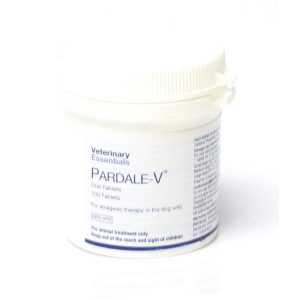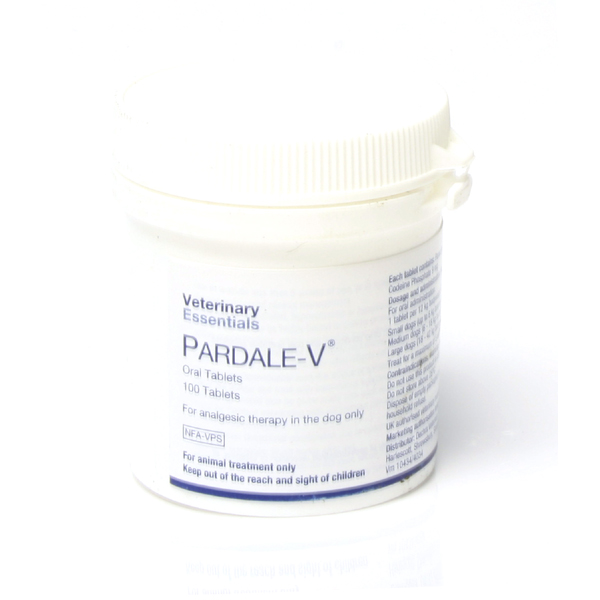I often get asked if there are any pain killers we can give to dogs if they injure themselves – for example if they suffer a sprain or strain. Many people get confused about what we can and cannot give to dogs – and rightly so. There are many drugs that are perfectly fine for humans to take but would have serious and sometimes catastrophic effects on our furry friends such as Ibuprofen . It is important to ascertain which drugs are OK for canine use and never just guess.
While the odd pain-reliever in a first aid capacity for those times when your vet’s office is closed is one thing, veterinary advice should always be sought for on-going problems such as arthritis, lameness or if you are unsure as to why your dog appears to be in pain. Many a mistake has been made when a lay person has self-medicated their dog in the mistaken belief that they know what their dog needs, when in fact there has been something much more serious going on. Please ALWAYS seek your vet’s advice when giving your dog medication – there is a reason why it takes them so long to get through vet school you know!
So, it’s Saturday evening and your dog has had a minor accident of some type. He’s not seriously injured enough for you to call out the emergency vet, but neither do you want to leave him in any discomfort over the next 36 hours while you wait for the vet’s office to open on Monday morning. What do you do? Is there anything you can give your dog to safely alleviate his pain?
In these particular situations, you can give your dog a canine Paracetamol. There is one prescribed and licensed specifically for canine use and this drug is called Pardale.

Pardale-V prescription-only canine Paracetamol comes in 400 mg tablets and the recommended dose is no more than 10mg to every kilo of body weight. Therefore, for a Ridgeback such as my adult males (40 kg), we’d be looking at a whole tablet and for smaller breeds such as Labradors or Collies, for example, half a tablet would be more reasonable.
Because the weight to medication ratio is so important PLEASE CHECK WITH YOUR VET as to how much would be safe and suitable for your dog. You may not want to pay for an emergency consultation, but there’s nothing stopping you telephoning the on-call vet for some advice rather than guessing and giving your dog an inappropriate dose or medication.
It is also worth remembering that Paracetamol may not be safe for ALL dogs – ie those with certain pre-existing medical conditions or those who are already taking some other forms of medication. I cannot stress enough how important it is to check with your vet before giving ANY tablet or medication to your dog.
Another pain-killer we’ve been familiar with for years is Aspirin. It’s a good pain reliever and can also be used to bring temperatures down and to help with conditions where there is swelling, such as in a sprain or in arthritic conditions. Buffered Aspirin is something which can be given safely to your dog and is known as an NSAID (non steroidal anti-inflammatory drug).
So, everybody has heard of an Aspirin – but what does “buffered” mean? Well, buffered Aspirins are Aspirin tablets which are coated with a substance such as calcium carbonate. It is common for Aspirin to cause an uncomfortable acidic reaction of the stomach lining and so the “buffered” coating helps to neutralise acid and reduce the incidence of your dog getting an upset stomach. (N.B. It is different from the enteric coated varieties).
Brands of Buffered Aspirin
The generic name for Buffered Aspirin is acetylsalicylic acid. It is not licenced by the FDA for canine use and is actually intended only for human consumption, although it is commonly prescribed for dogs. There are several different brand names of Buffered Aspirin including Aftercare, Ascription, Arthricare, Bufferin and Palaprin. There is, however, a Buffered Aspirin specifically intended for use in dogs and that is Drs. Foster and Smith Buffered Canine Aspirin.
Although I understand it can be readily purchased in the USA,
Buffered Aspirin is NOT AVAILABLE in the UK.
If you intend to source this drug over the internet, please be very careful indeed as you have no real way of knowing what’s in the product you receive. There are many unscrupulous “dealers” on the net and goodness only knows what you could be giving your dog, just one of the many reasons why your medication should always be prescribed by your vet.
Administration of Buffered Aspirin
The recommended dose for Buffered Aspirin in tablet form is 5 to 15 mg per pound of the dog’s weight, given every 8 to 12 hours. It is important to remember that while it is fine to give smaller doses than as stated above, you should certainly never go over this dosage unless your vet directs you to do so. Also, if you have a giant breed, please ascertain what the highest dose of buffered aspirin is, as there are always maximum amounts with any drug. Please take the time to ask your vet in advance just what would be a safe dose for your dog – and make sure you know how much he weighs!
Tell-tale signs to look out for that your dog has been overdosed are:
* vomiting
* blood in the stool or vomit
* depression
* loss of appetite
* high temperature
* fits
* coma
* death
Because the acidic nature of the Aspirin can cause an upset stomach and, over time and long-term use there may be ulceration of the stomach lining, it is advisable for the tablet to be given orally with food.
It is important to remember that it should never be given to any dog who has stomach ulcers, asthma or kidney disease and should certainly never be used for any dog who is due to undergo surgery within a week of taking it. Aspirin thins the blood and could cause serious complications when the animal goes to theatre. Always make sure you tell your vet if you have given your dog any medication not prescribed directly by him for your dog.
Side-Effects:
The side effects of long-term use of Aspirin are well documented and for this reason it is always best to use it only in a first aid capacity, for short spells, unless directed otherwise by your vet. Continued use can cause:
* Allergic reactions
* Kidney damage – (indicated by lower levels of water intake)
* Vomiting
* Loss of appetite
* Stomach ulcers – (indicated by vomiting, lack of appetite, blood in the stool)
* Blood loss
* Anaemia
Please remember that any emergency medication or pain-relief you give to your dog should be appropriate to his weight, his unique medical history and to work in accordance with any drug he is already taking. Seek professional advice from your vet at your earliest convenience rather than guessing or administering the medication over any length of time.


